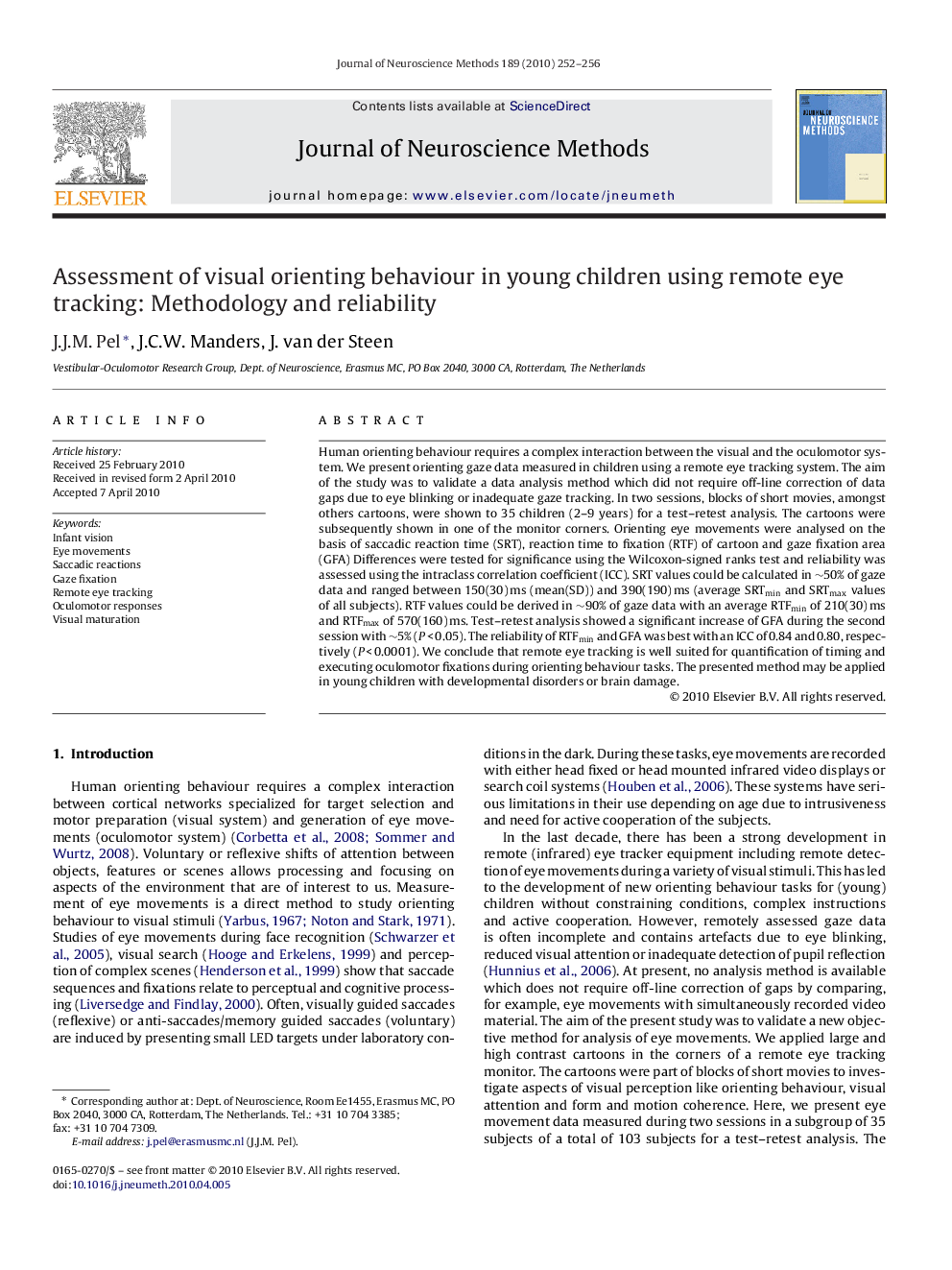| Article ID | Journal | Published Year | Pages | File Type |
|---|---|---|---|---|
| 4335625 | Journal of Neuroscience Methods | 2010 | 5 Pages |
Human orienting behaviour requires a complex interaction between the visual and the oculomotor system. We present orienting gaze data measured in children using a remote eye tracking system. The aim of the study was to validate a data analysis method which did not require off-line correction of data gaps due to eye blinking or inadequate gaze tracking. In two sessions, blocks of short movies, amongst others cartoons, were shown to 35 children (2–9 years) for a test–retest analysis. The cartoons were subsequently shown in one of the monitor corners. Orienting eye movements were analysed on the basis of saccadic reaction time (SRT), reaction time to fixation (RTF) of cartoon and gaze fixation area (GFA) Differences were tested for significance using the Wilcoxon-signed ranks test and reliability was assessed using the intraclass correlation coefficient (ICC). SRT values could be calculated in ∼50% of gaze data and ranged between 150(30) ms (mean(SD)) and 390(190) ms (average SRTmin and SRTmax values of all subjects). RTF values could be derived in ∼90% of gaze data with an average RTFmin of 210(30) ms and RTFmax of 570(160) ms. Test–retest analysis showed a significant increase of GFA during the second session with ∼5% (P < 0.05). The reliability of RTFmin and GFA was best with an ICC of 0.84 and 0.80, respectively (P < 0.0001). We conclude that remote eye tracking is well suited for quantification of timing and executing oculomotor fixations during orienting behaviour tasks. The presented method may be applied in young children with developmental disorders or brain damage.
